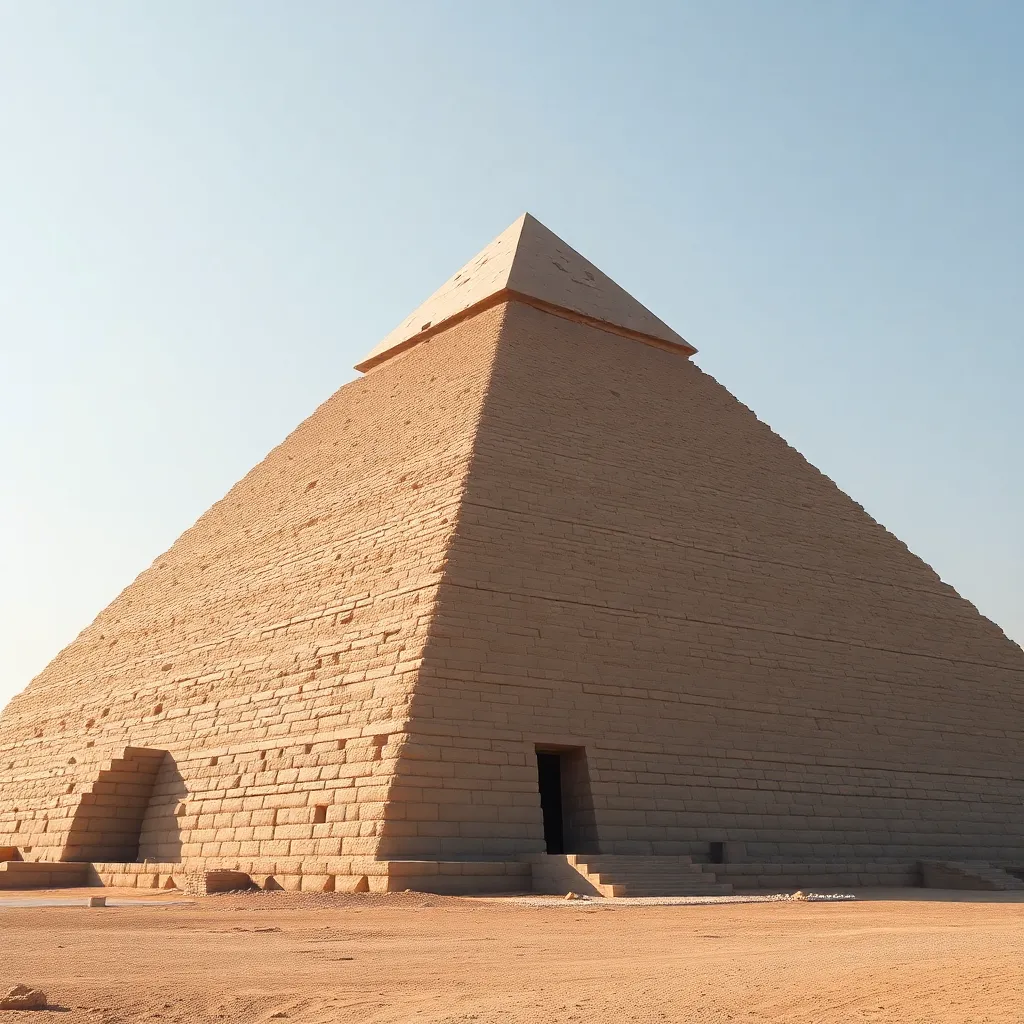The Pyramid of Khufu: The Pharaoh’s Monument
1. Introduction
The Pyramid of Khufu, also known as the Great Pyramid of Giza, is one of the most iconic monuments of ancient Egypt. Constructed during the Fourth Dynasty of the Old Kingdom, the pyramid stands as a testament to the architectural ingenuity and the cultural significance of the time. It is the largest of the three pyramids on the Giza Plateau and was built as a tomb for Pharaoh Khufu, who ruled from 2589 to 2566 BCE. The significance of this monument extends beyond its sheer size; it reflects the religious and political ideologies of ancient Egypt, showcasing the power and divine status of its pharaohs.
2. Historical Context
The Old Kingdom of Egypt, often referred to as the “Age of the Pyramids,” was a period of remarkable cultural and political development. This era, which lasted from approximately 2686 to 2181 BCE, was characterized by strong centralized government, economic prosperity, and monumental architecture.
Pharaoh Khufu, also known by his Hellenized name, Cheops, ruled during this pivotal time. His reign from 2589 to 2566 BCE marked the zenith of pyramid construction. The socio-political climate during Khufu’s rule was one of relative stability, which allowed for the mobilization of resources and labor necessary for such grand projects.
3. Architectural Features of the Pyramid
The Pyramid of Khufu originally stood at 146.6 meters (481 feet) but now reaches approximately 138.8 meters (455 feet) due to the loss of the outer casing stones. The base of the pyramid covers an area of 13 acres, making it one of the largest structures ever built.
- Dimensions: Each side of the square base measures about 230.4 meters (756 feet).
- Construction Techniques: The pyramid was constructed using an estimated 2.3 million blocks of stone, each weighing between 2.5 to 15 tons.
- Materials: The core of the pyramid is made from locally quarried limestone, while the outer casing was originally made of Tura limestone, which was highly polished.
Compared to other pyramids, such as those built for Khufu’s successors, the Great Pyramid is notable for its precise alignment and scale, setting a standard for future constructions.
4. Construction and Labor
The construction of the Pyramid of Khufu has long been a subject of debate among historians and archaeologists. Various theories exist regarding the workforce behind this monumental task.
- Skilled Laborers: Recent evidence suggests that the pyramid was built by a well-fed workforce of skilled laborers rather than by slaves, as once believed.
- Organization: The construction involved meticulous planning and organization, including the logistics of transporting heavy stone blocks from quarries to the pyramid site.
- Labor Camps: Archaeological finds indicate the existence of labor camps near the Giza Plateau, where workers lived during the construction period.
The combination of skilled labor and organized efforts allowed for the construction of such a colossal structure, showcasing the advanced engineering capabilities of the ancient Egyptians.
5. Cultural and Religious Significance
The Pyramid of Khufu was not merely a tomb; it played a crucial role in the Egyptian belief system. It was designed to facilitate the pharaoh’s journey to the afterlife, reflecting the Egyptians’ views on death and the divine.
- Afterlife Beliefs: The pyramid served as a gateway to the heavens, emphasizing the importance of the afterlife in ancient Egyptian culture.
- Divine Kingship: Khufu’s pyramid symbolized his divine status and his role as a mediator between the gods and the people.
- Symbolism: The pyramid’s shape is thought to represent the rays of the sun, aligning with the sun god Ra, further reinforcing the connection between the pharaoh and the divine.
6. Archaeological Discoveries and Research
Over the years, numerous archaeological discoveries have shed light on the Pyramid of Khufu and its construction. Key findings include:
- Worker’s Tombs: Excavations have uncovered tombs of workers, providing insights into their lives and burial practices.
- Innovative Technologies: Advances in technology, such as 3D scanning and drones, have improved our understanding of the pyramid’s structure and construction methods.
- Ongoing Research: Researchers continue to explore undiscovered chambers within the pyramid, seeking to understand more about its construction and purpose.
7. The Pyramid of Khufu in Modern Culture
Today, the Pyramid of Khufu is recognized as a UNESCO World Heritage Site and remains one of the most visited tourist attractions in the world. Its influence extends beyond archaeology into various aspects of modern culture.
- Art and Literature: The pyramid has inspired countless works of art, literature, and films, symbolizing mystery and ancient wisdom.
- Tourism: Millions of tourists visit the Giza Plateau each year, significantly impacting the local economy and preservation efforts.
- Cultural Symbol: The Great Pyramid stands as a symbol of human achievement and the enduring legacy of ancient civilizations.
8. Conclusion
The Pyramid of Khufu is a monumental legacy of ancient Egypt, representing the pinnacle of architectural achievement and the complexities of Egyptian culture. Its enduring presence serves as a reminder of the importance of preserving ancient monuments for future generations.
As research and exploration continue, the Pyramid of Khufu will undoubtedly reveal more secrets about ancient Egyptian civilization, further enriching our understanding of this remarkable period in history.




